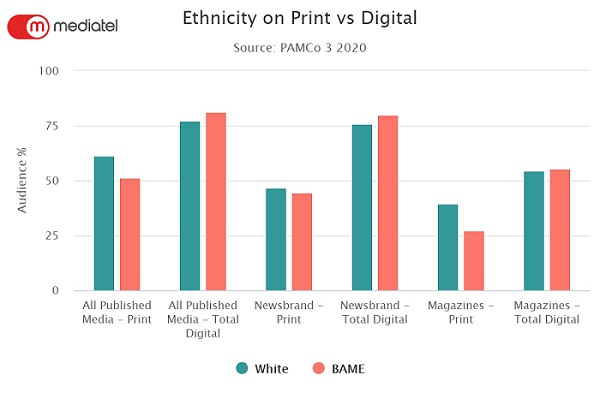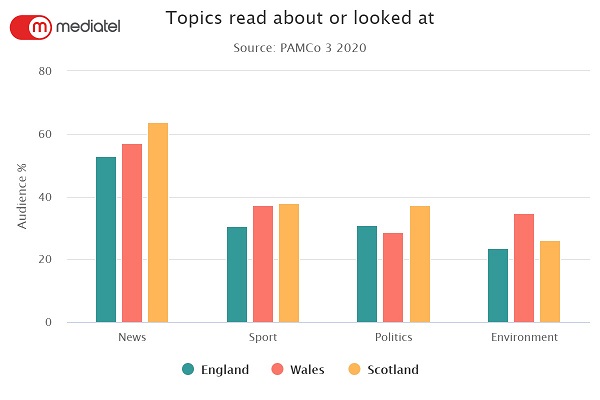Holding up a mirror to modern Britain

Addressing a challenge posed by Nationwide’s Chris Ladd last week, CEO Simon Redican explains how PAMCo can help the advertising industry focus on diversity in planning
Like many people of my generation, I went to a school which was 99% white. University in London was slightly more diverse, but only slightly and the ad industry I joined in 1988 was equally mono cultural. To a lad from a northern comprehensive school, advertising seemed very middle class and London and home-counties centric.
Viewed from today’s perspective, the targeting employed at the time I joined the ad industry reflected this – being quite mechanistic, using standard socio demographic definitions in an impersonal way and with little regard to people’s increasingly diverse backgrounds.
Whilst the industry continues to wrestle with better representing modern Britain in terms of its employment practices, it is heartening to see major agencies putting diversity and inclusion at the heart of the planning process. This development is particularly important because it is something that can be done immediately, ensuring advertisers are addressing their messages effectively across the rich diversity of this country.
In a recent article for Mediatel News, Chris Ladd, head of media at Nationwide, called for the industry to do more to “make our industry’s output truly inclusive for all”.
Many agencies are plainly heeding the call of advertisers like Nationwide. Launching MediaCom’s ‘Inclusive Planning’ initiative in August, Claire McAlpine, joint head of social change, said: “Inclusive Planning will ensure that the work we do truly reflects the diverse population of this country, ensuring advertising is relevant and effective”.
In his article, Nationwide’s Chris Ladd posed the following challenge: “How are media researchers improving data to allow greater insight into these audiences while maintaining compliance?”
At PAMCo, the joint industry currency for published media, we sit on a wealth of such data that allows advertisers to explore how they can use the UK’s magazines and newsbrands to effectively target messages to different demographics. We have data on ethnicity, social background, education, regionality, gender and age.
Given the size and quality of our sample, the user can also combine these characteristics according to brief, mixing in attitude statements and the many passion areas readers of the UK’s unique publisher ecosystem enjoy.
We also have this data by platform, showing the different consumption across print, desktop, phone and tablet.
As a board director at PAMCo and an industry practitioner, Adam Crow, head of publishing at Mediacom, has championed our drive to represent Britain in all its complexity.
“It’s vital for my team to be able to give our clients a granular picture of all of the audiences that UK newsbrands and magazines can reach and to understand the nuance within the data,” he says.
Headline data shows that the publishing industry’s audience broadly represents modern Britain, with newsbrands reaching 91% of the Black, Asian and ethnic minority adult population, and magazine media 80% in line with the population as a whole.
As you dig into the data, further insights to inform planning are revealed. Black, Asian and ethnic minority audiences are more likely to consume publisher content on digital platforms for example, probably reflecting a younger and more urban demographic.

Scotland remains a hotbed of readership, indexing 5 percentage points higher than Great Britain as a whole for daily readership of published media content.
Interestingly, women in Scotland are 20% more likely to read about news than the GB average, whilst working class men in Scotland have a particular passion for sport (indexing at 130 vs the GB average).

As the world becomes more complex and data ever more granular, PAMCo will continue to supply the market with audience data which is reflective of modern Britain.
I was born at a time when homosexuality was still illegal in the UK. It is a sign of how far we have come as a society that PAMCo is a research pioneer in recognising that gender is non binary and allowing respondents to identify as male, female or in another way following MRS guidelines.
Our technical group work hard to ensure that the questions we ask are reflective of Britain and respectful to respondents, while giving the market the increasingly complex data needed for effective communication. As of Q4 2020, PAMCo has also begun to gather data on disability and sexual orientation.
I urge users to play around with PAMCo data and benefit from the richness of insight it will bring to your campaigns.
As well as providing better data for planning and buying ad campaigns, PAMCo data can give a very London centric industry an accurate picture of modern Britain in all of its different manifestations, and maybe even challenge a few personal perceptions about the country we think we know.
Simon Redican is CEO at PAMCo




